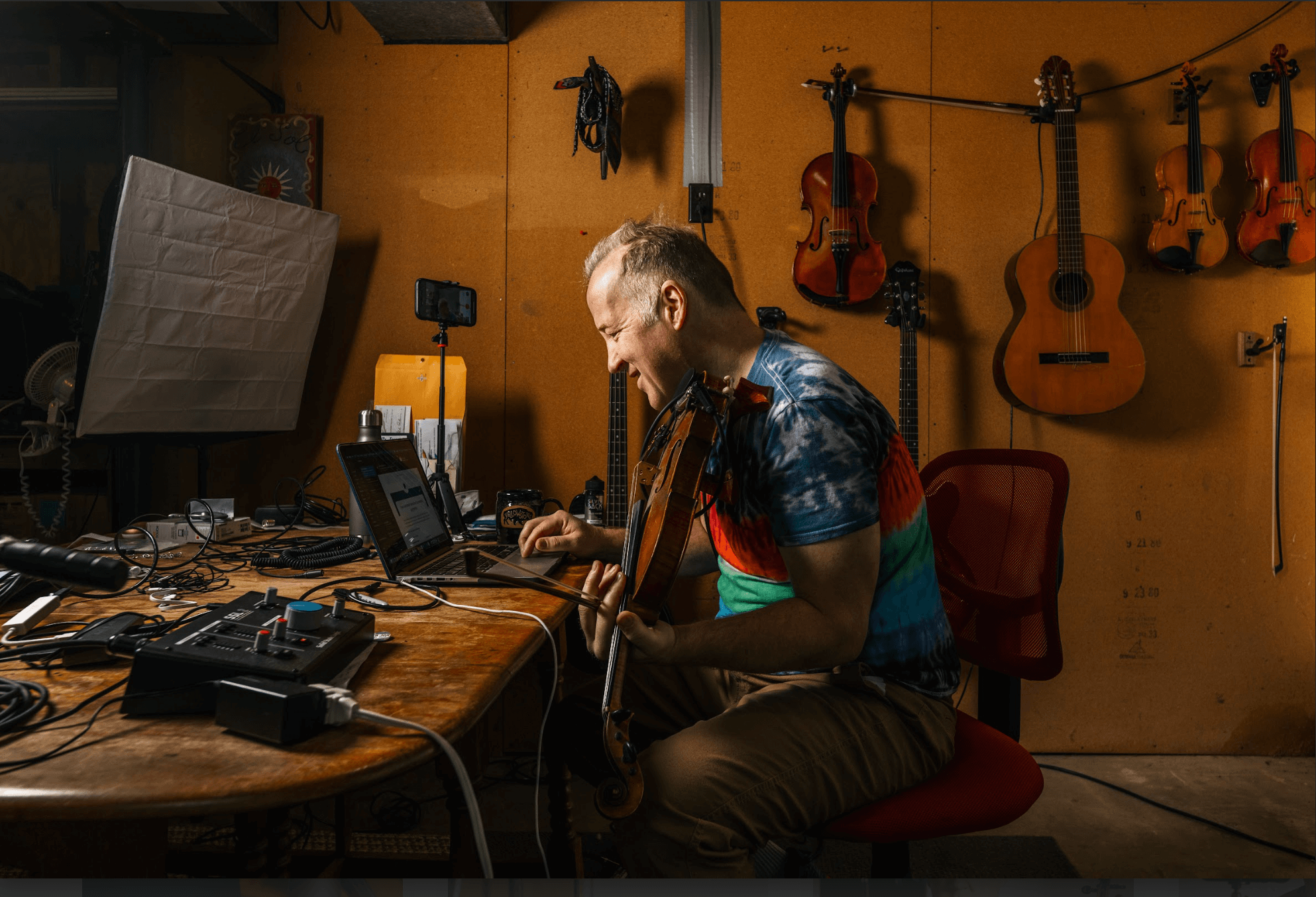I’ve been teaching music online since 2008. In this post, I’ll share how to make more money teaching online while delivering better results to your students.
- Use MEDIA to present information to students
- Use more asynchronous check-ins and less big block lesson times
Forums, content libraries, and email are tools used to flip the classroom.
Instead of saying something thousands of times, say it once and impact many.
Instead of teaching only in real time, use asynchronous checkin combined with curated evergreen content.
Teachers can:
- save time
- increase impact
- enroll and retain more students
Students get:
- better learning outcomes
- more affordable cost
- increased access to learning materials
- more scheduling flexibility
I am often asked how to charge more for zoom music lessons, or how much to charge for online music lessons in general. This approach allows so much more flexibility, and so many better pricing options, than thinking in terms of charging only for 30-60 minute blocks of your 1 on 1 time.
Whether you work for yourself or an organization, more easily create know, like, and trust.
SIMPLE is better. You don’t need to buy-in to some high-specialized platform or software.
Teach via email. Teach in a voice memo. Teach with an infographic. Use Youtube videos, FB groups, Google drive, email, FB messenger, text.
Whatever is the easiest way to deliver or receive your content, use it.
Create or curate content for every foundational topic that you teach. Batch create and batch process lessons.
A student asked you a common question? Make a lesson for that one student, then repurpose for many.
Teach over video, audio, and text. Share your teaching materials via links or directly on any platform.
Make playlists of lessons for your students. For example, my playlist has hundreds of free play-along lesson videos for Orchestra and String teachers on numerous styles.
Email can be used to drip out your teachings at regular intervals. My students often tell me how much they love my email drip course within my private studio membership.
Online forums (like FB groups) are good places to hub content. When you check the “social learning” box in your FB Group, you can curate Social Learning UNITS, i.e. posts organized by topic.
Don’t hold back from sharing your content. Your content is unique; it will not only help your students, but others will become inspired to work with you or support your program.
Get you students playing along or after you- have them mute themselves to get everyone participating at once.
Orient the exercises towards the beginners, while offering modifications for your advanced students.
Aim to get them playing 90% of the time during group lessons. There are four ways I do this with my group classes- I cover all of these in my course on How to Teach better Online
Reserve time to have them play individually for you at the end of class.
Assign students to submit videos to you. They can record themselves playing to a metronome or to one of your curated lessons (like a play-along video!).
You can share feedback on student submissions by making a video, writing an email, sending a voice memo, or leaving a comment underneath their post on Youtube or in an online forum.
Posting everything to an endless comment thread is a great way to keep a running dialogue. It’s how I communicate in my student groups. Or you can just use email- just keep it simple.
It takes a few minutes to comment on a student’s work sample or question. The feedback you provide in those few minutes could be worth as much as an hour-long lesson.
Here’s one template that I use as a basis for mini-lessons to give feedback on student submissions:
“Dear (student)- I watched your reel….The biggest conceptual thing I would encourage you to work on is … From a “skill building” side you can work on… From a “creative refining” side you can…. This can be practiced in these ways .. A variation could include …”
Some teachers worry that flipping the music classroom or studio will result in less personal connection with their students. It doesn’t have to be this way.
Here’s a student’s response to an email I sent them commenting on their video submission:
”Thank you so much for this detailed/insightful/inspiring feedback on my reel… I wasn’t ever given such a clear view of the work ahead and the way you express it makes me believe that it is in fact indeed manageable…”






